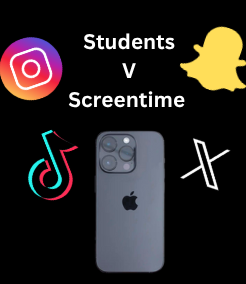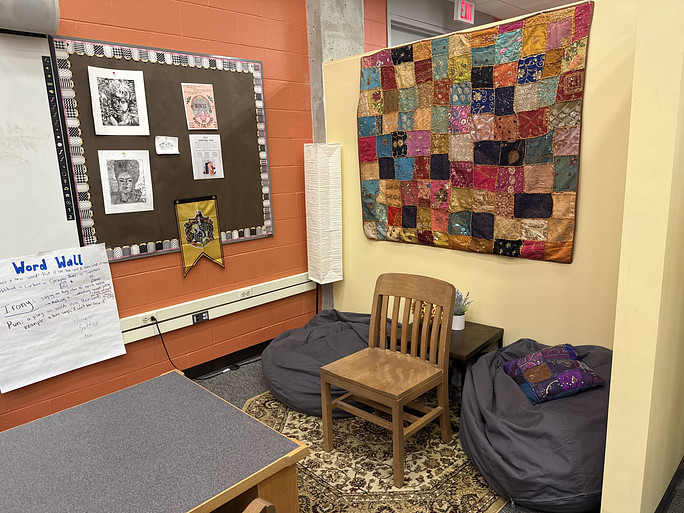
View our slideshow of Vukovic’s artwork here.
By CARMELLITE CHAMBLIN
A great new talent has graced the halls of Malden Media Center Gallery at Malden Access Television (MATV) in Malden Square. Her name is Lidija Vukovic, and she has been living in the United States for 8 years since moving from her homeland country of Croatia; a place intersecting central Europe, the Balkans, and the Mediterranean.
Vukovic attended The School of Art and Design in Croatia, where she participated in multiple art exhibitions.She had her artistic debut at the young age of 16 “at an international fashion show,” while still in high school. Her artworks around that time consisted of hats, framed of sand with “wire [netting] [as] the base.” Vukovic put fabric on the wire netting and “would glue the sand over it.” These three-dimensional objects were very wearable. One might think using sand to make hats is quite odd, but because she didn’t have too much money to invest in fancy materials, Vikovic sewed by hand, “to make it the most interesting that [she] could.”
Her first US exhibit was at the Wava Gallery in New Haven, Connecticut. Since then, she has participated in exhibitions in Boston, Cambridge, and British Columbia two years ago, and other additional galleries from the area. Her most recent exhibition was here in Malden, and this is a distinct exhibition because the MATV Gallery proudly holds the title of being her first solo public display, with the main attraction of these displays being bog bodies.
Vukovic, a current student at Simmons College, was discovered through Linda Zalks a teacher at Simmons College.Since the discovery, Vukovic has been involved in Malden from Malden Reads in 2011 with the YWCA teens, “where she did some art for us” Ms. Anne D’Urso-Rose who is the associate director stated.
Her inspiration for bog bodies originated from a National Geographic video on these unique corpses which, unlike other ancient relics, have been kept to a nearly perfect condition; despite being centuries old. Their skin is intact, as well their as internal organs, though their bones are usually worn down, since the acid of the sphagnum deteriorates the calcium phosphate of bone. They were unearthed from the Sphagnum wetlands of Northern Europe, England, Ireland, Germany, and Scotland, and these humans are predicted to have lived back in 2000 B.C., during the Iron Age.
Vukovic, shown in a video obtained by MATV, demonstrates the process she undergoes for her paintings. She takes the pesto knife filled with the soft, thick paste and spreads it across the canvas. “At this point [she does not] have any idea as to what [she] wants to do, which [to her] is good because…[she] wants the paste to direct [her], to lead [her] there, to what [the piece of art] is going to be.” She then proceeds to add layers, and looks at her paste filled canvas, questioning if she can see the body or the face. If the pesto knife took her in a direction she does not see fit, she could always use the knife to smooth the paste and place a big bulk of it in the center, directing the thick texture in another direction.
She uses obscure colors, the thick smooth paste, and the edges of the knife.The effects are astounding, creating a jungle-like vine effect. The art is genuine, with holes ever flowing and rippling.
Vukovic’s artwork has gotten reviews from both ends of the field. “Several people say this stuff is freaky and creepy. [But, we’ve also received] lots of positive feedbacks [saying] this stuff is so cool].” stated Rose. She explained that “[she] likes art that emits one emotion or the other, [and] feels like that’s what art should do.
Vukovic also mentioned that “[she] likes using dark colors. Bright warm colors wouldn’t work well with [her] paintings.” Some people suggest she uses warmer colors to make her art brighter but “[she] just enjoy[s] [her art] the way it is”. Vukovic also expressed that “[she] enjoys when [she] saturates [her art] with browns, greens, and blues so [she] can erase the surface, and get these images out.” Her favorite part of this type of art could not be done if she used very light colors, and “[she] wouldn’t enjoy [her own work].”
An average, everyday person might interpret Vukovic’s work to be somewhat gloomy however, her intentions are the exact opposite. Vukovic’s art has quite a colorful meaning. The tone, as Rose explained, “isn’t gruesome, as Vukovic sees it as part of nature…connecting us”. Vukovic further explains “[she] seek[s] to connect the human body and memories, to represent the organic world as emotions still living within grass and branches. The idea of Bog bodies has opened avenues through which [she] can personify and make emotions tangible by giving them character – a face. They are emotions that scream to be noticed and never forgotten. In this way nature appears to [her] by showing [her] not the short life spans of living beings, but its dynamic existence in every shape that keeps our memories alive.”
In one of her recent paintings, Vukovic has fabricated a way in which the face is “not so explicit.” It was shown at a recent exhibit, and people wondered what was going on in the artwork until “they stepped back and were like *gasp* ‘I see faces’ and they were counting faces.That’s the most exciting thing for [her] [because] they were exploring something new”, Vukovic explained.
In another one of her newer paintings found at the gallery entitled “The Memories,” a bog woman is transformed into a modern woman with a three dimensional deep violet dress textured with folds as well as a hat sitting on top of her head.
“I like to create hidden spaces, and then wonder myself what’s inside. What can I put inside?” Vukovic quotes, and in few of her artworks you’ll indeed find hidden spaces, filled with surprising, and unexpected objects.




